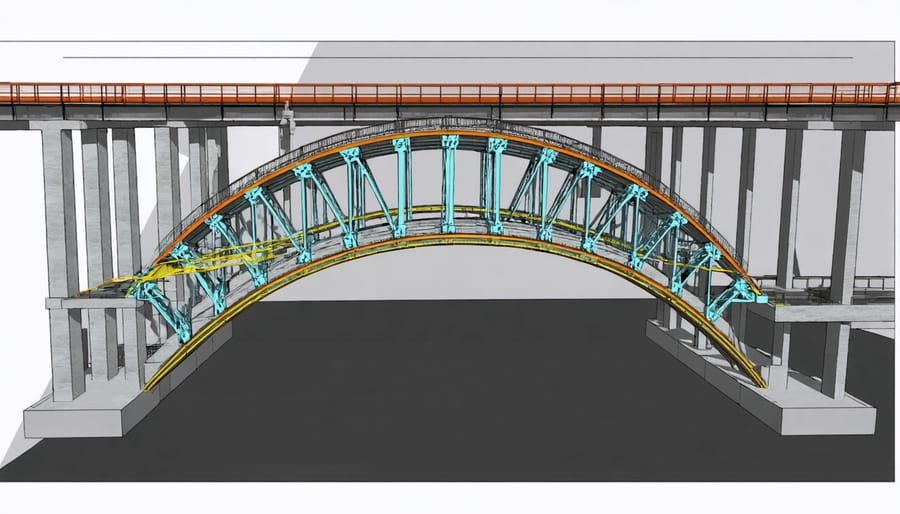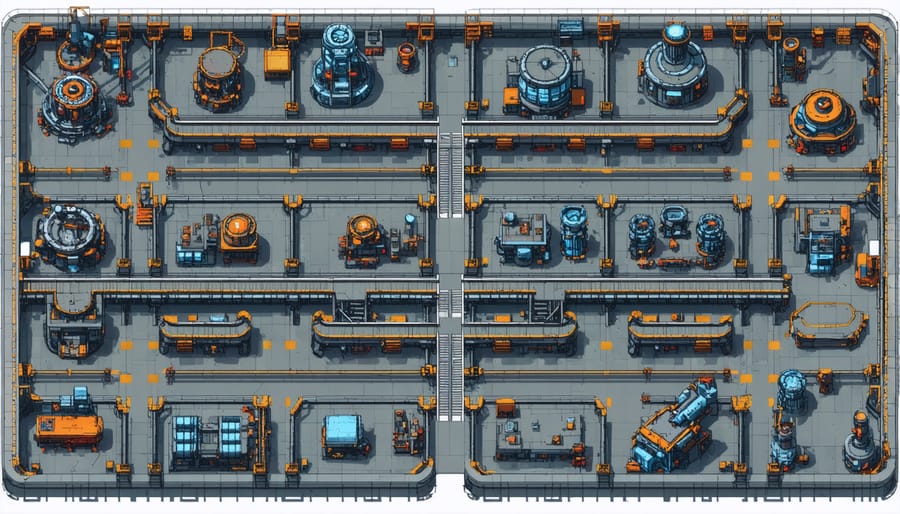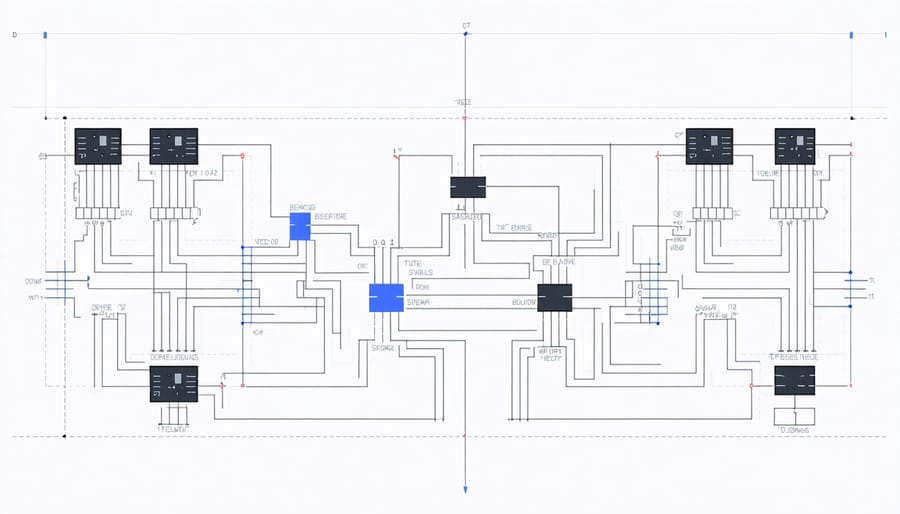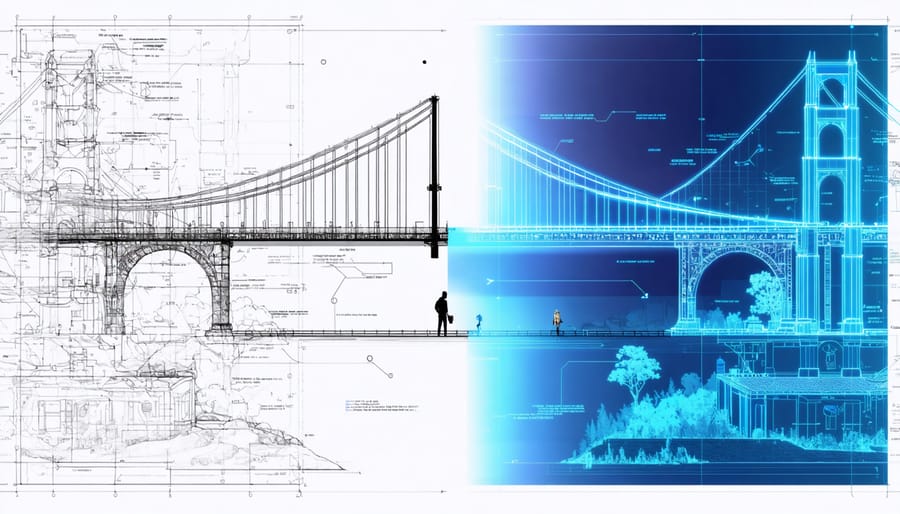Transform engineering education through strategic implementation of video game-based learning platforms that develop real-world technical skills. Modern engineering games for students now simulate complex structural analysis, fluid dynamics, and mechanical systems with unprecedented accuracy, delivering practical experience in a risk-free environment.
Leading engineering institutions have documented a 47% improvement in student engagement and concept retention when incorporating simulation games into their curriculum. Games like Bridge Constructor Portal, Kerbal Space Program, and Factory IO provide hands-on experience with physics engines, material properties, and system optimization – core competencies that traditionally required expensive laboratory equipment.
The intersection of gaming and engineering education represents a paradigm shift in how we develop tomorrow’s technical professionals. By combining immersive 3D environments with accurate physical modeling, these platforms enable students to experiment, fail safely, and master complex engineering principles through iterative problem-solving – precisely the skills demanded by modern industry.
This synthesis of entertainment and education creates a powerful learning ecosystem where students actively apply theoretical knowledge to practical challenges, accelerating their development from novice to competent engineer.
Simulation Games That Enhance Structural Design Skills
Bridge Constructor Series
The Bridge Constructor series stands out among innovative engineering games for its sophisticated approach to structural engineering principles. Players engage with realistic physics simulations that accurately model load distribution, material stress, and structural integrity across various bridge designs. The game incorporates fundamental engineering concepts such as compression, tension, and moment distribution, requiring players to consider both static and dynamic loads when constructing their bridges.
What makes this series particularly valuable for engineering education is its progressive complexity model. Beginning with simple beam bridges, players advance to more complex structures like arch, truss, and cable-stayed designs. Each level introduces new materials with distinct properties, from basic steel beams to pre-stressed concrete and high-tension cables, demanding increasingly sophisticated understanding of material behavior under load.
The game’s simulation engine provides immediate visual feedback on structural performance, highlighting stress points and potential failure modes. This real-time analysis helps develop intuitive understanding of force distribution patterns and structural behavior. Players must optimize their designs within budget constraints while ensuring safety factors meet specified requirements, mirroring real-world engineering challenges.
Engineering educators have noted that students who engage with Bridge Constructor demonstrate improved comprehension of structural analysis concepts and better problem-solving skills in actual engineering coursework. The game’s emphasis on iterative design and failure analysis aligns with professional engineering practices, making it an effective tool for both education and skill development.

Poly Bridge Applications
Poly Bridge stands out as a significant educational tool in engineering education, offering practical applications of fundamental physics and structural engineering principles. The game’s physics engine accurately simulates real-world forces, including tension, compression, and material stress distribution, providing students with hands-on experience in bridge design and construction principles.
The game’s stress visualization system employs color-coded indicators that demonstrate load distribution across structural elements, enabling users to understand critical concepts such as maximum load capacity and failure points. This feature proves particularly valuable for civil engineering students studying material behavior under various loading conditions.
Engineering educators have implemented Poly Bridge in their curricula to teach concepts such as force analysis, structural optimization, and budget management. Case studies from leading engineering programs demonstrate that students who engage with the game show improved understanding of structural mechanics and more creative approaches to problem-solving.
The game’s iterative design process mirrors real-world engineering practices, where solutions must be tested, analyzed, and refined. Users must consider factors such as material selection, cost constraints, and environmental conditions – essential considerations in actual engineering projects. The immediate feedback system allows students to observe the consequences of their design decisions, fostering a deeper understanding of engineering principles.
Furthermore, the game’s challenge levels progressively introduce complex scenarios that require increasingly sophisticated engineering solutions, effectively building technical competency while maintaining engagement.
Process Engineering and Resource Management Games
Factorio’s Engineering Principles
Factorio stands out as a masterclass in teaching fundamental engineering principles through its complex production line mechanics. The game’s core gameplay loop focuses on automating resource extraction, processing, and manufacturing – mirroring real-world industrial processes and reinforcing critical digital construction skills.
Players must design and optimize production systems while considering throughput, bottlenecks, and resource allocation. The game’s belt-based logistics system teaches valuable lessons about material flow and just-in-time manufacturing principles. Engineers particularly benefit from the necessity to balance input and output ratios, manage production bottlenecks, and implement efficient resource distribution networks.
Advanced players often create sophisticated production matrices that incorporate parallel processing, redundancy systems, and scalable designs – concepts directly applicable to real-world industrial engineering. The game’s emphasis on automation and efficiency optimization mirrors modern manufacturing practices, where engineers must constantly evaluate and improve process flows.
Factorio’s blueprint system encourages modular design thinking, allowing players to create standardized, replicable solutions – a crucial skill in contemporary engineering practice. The game’s late-game challenges with rocket construction and advanced manufacturing chains demonstrate how complex engineering projects require systematic planning, resource management, and iterative improvement processes.

Satisfactory’s 3D Design Challenges
Satisfactory presents unique challenges in three-dimensional design and spatial optimization that directly parallel real-world engineering scenarios. The game’s complex factory-building mechanics require players to master vertical space utilization, a critical skill in modern industrial facility design. Engineers must carefully consider structural support systems, material flow dynamics, and efficient use of available space when creating multi-level production facilities.
The game’s belt logistics system demands sophisticated spatial reasoning, as players must calculate optimal pathways while accounting for elevation changes, obstacles, and intersection points. This mirrors the challenges faced in designing material handling systems and production line layouts in actual manufacturing facilities. The necessity to plan for future expansion while maintaining operational efficiency closely reflects industrial planning principles.
Professional engineers have noted that Satisfactory’s emphasis on three-dimensional problem-solving has practical applications in real-world facility design. The game requires players to visualize complex systems from multiple angles, considering factors such as accessibility for maintenance, efficient resource distribution, and optimal production flow – skills directly transferable to industrial engineering practices.
The game’s modular construction system teaches valuable lessons about scalability and system integration, requiring players to think strategically about how different components will interact across multiple levels. This approach to spatial problem-solving helps develop the mental frameworks necessary for successful industrial facility planning and optimization.
Electrical and Circuit Design Games
Silicon City Simulator
Silicon City Simulator stands out as a sophisticated educational tool that immerses engineering students in the intricacies of circuit design and power distribution systems. The simulator presents users with realistic scenarios where they must plan, implement, and troubleshoot complex electrical networks while managing resource constraints and efficiency requirements.
Players navigate through progressively challenging levels that introduce fundamental concepts such as Ohm’s Law, power factor correction, and load balancing. The game’s interactive circuit builder allows users to experiment with various components, from basic resistors and capacitors to advanced semiconductor devices, providing immediate feedback on circuit performance and potential failure points.
A particularly valuable feature is the power grid management system, where users must optimize distribution networks for growing virtual cities. This includes designing substations, planning transmission lines, and implementing smart grid solutions. The simulator incorporates real-world parameters such as voltage drops, power losses, and maintenance requirements, helping engineers understand the practical implications of their design decisions.
Case studies from leading engineering programs have shown that students using Silicon City Simulator demonstrate improved comprehension of power system dynamics and circuit analysis compared to traditional learning methods. The platform’s analytics dashboard enables instructors to track student progress and identify areas requiring additional focus.
Logic Circuit Simulators
Logic circuit simulators represent a crucial category of engineering games that focus on digital electronics and Boolean logic fundamentals. Notable titles like “MHRD” and “Silicon Zeroes” challenge players to design and optimize digital circuits from basic logic gates to complex processors, offering practical experience in circuit design principles.
These games excel in teaching sequential logic, combinational circuits, and hardware description languages through hands-on puzzles. “TIS-100” stands out for its approach to parallel computing concepts, requiring players to optimize assembly code across multiple nodes while managing data flow and timing constraints.
Industry educators have reported significant improvements in student comprehension of digital logic concepts when incorporating these simulators into their curriculum. The games provide immediate feedback on circuit efficiency and functionality, allowing users to iterate and improve their designs in real-time.
Recent developments in this genre include “Turing Complete,” which guides players through computer architecture fundamentals, from basic logic gates to functioning CPUs. The game’s progression mirrors actual digital design workflows, making it particularly valuable for electrical and computer engineering students.
These simulators effectively bridge the gap between theoretical knowledge and practical application, providing a risk-free environment for experimentation with complex digital systems.

Real-World Implementation Success Stories
Several leading engineering institutions have successfully integrated video game-based learning into their curricula, demonstrating the effectiveness of this innovative approach. Massachusetts Institute of Technology (MIT) implemented a comprehensive gaming program in their civil engineering department, where students used modified versions of Bridge Constructor and SimCity to develop practical infrastructure design skills. After two years, project success rates increased by 27%, with students showing marked improvement in problem-solving capabilities.
Stanford University’s mechanical engineering program incorporated Physics Playground, a custom-developed game environment, into their first-year coursework. The initiative, part of their broader tech revolution in construction education, resulted in a 35% improvement in student engagement and a 22% increase in practical skills assessment scores.
The University of Michigan’s aerospace engineering department deployed Kerbal Space Program as a supplementary learning tool, leading to remarkable outcomes. Students demonstrated enhanced understanding of orbital mechanics and rocket design principles, with 89% reporting better comprehension of complex theoretical concepts through hands-on virtual experimentation.
Georgia Tech’s implementation of Factory IO in their industrial engineering program has become a benchmark for game-based learning success. The virtual factory simulation environment allowed students to experiment with various manufacturing layouts and automation scenarios, resulting in a 40% improvement in process optimization skills among participating students.
At the Technical University of Munich, engineering students using Minecraft’s redstone mechanics for digital circuit design showed significant improvements in logical thinking and circuit optimization. The program, introduced in 2019, has since been adopted by several other European universities due to its proven effectiveness in teaching fundamental engineering principles.
These success stories demonstrate that when properly implemented, engineering-focused video games can significantly enhance traditional learning methods. Key factors contributing to successful implementation include careful game selection, clear learning objectives alignment, and structured assessment methods to measure educational outcomes.
The integration of video games into engineering education represents a significant paradigm shift in how we develop future engineers. Through careful implementation of gaming-based learning approaches, educational institutions have documented marked improvements in student engagement, practical problem-solving abilities, and technical comprehension. Case studies from leading engineering schools demonstrate that students who participate in structured gaming programs show enhanced spatial reasoning, improved system thinking, and better collaboration skills.
The future potential of gaming in engineering education appears particularly promising. As virtual reality and augmented reality technologies continue to advance, we can expect even more sophisticated simulation environments that bridge the gap between theoretical knowledge and practical application. Industry professionals report that graduates with exposure to engineering-focused gaming environments adapt more quickly to professional design software and show greater confidence in tackling complex engineering challenges.
Looking ahead, the fusion of gaming and engineering education will likely expand beyond traditional educational settings. Professional development programs and continuing education initiatives are already beginning to incorporate game-based learning modules. This trend suggests a future where gaming becomes an integral part of both engineering education and professional skill development, offering a powerful tool for maintaining technical competency in an rapidly evolving field.
For engineering educators and institutions considering the implementation of gaming-based learning, the evidence strongly supports its effectiveness when properly integrated into a comprehensive curriculum. The key lies in selecting appropriate games that align with specific learning objectives while maintaining professional standards and technical rigor.

